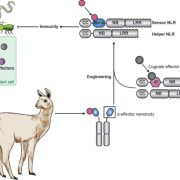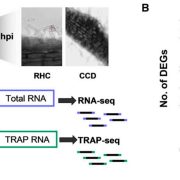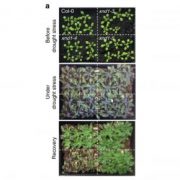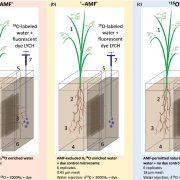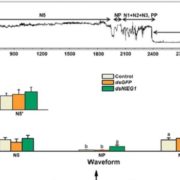Microbial landscape of the grapevine endosphere in the context of Pierce’s disease
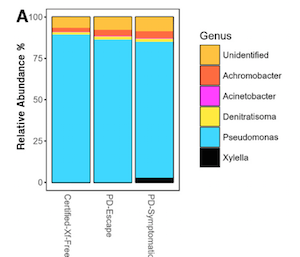 In vascular plants, structure and composition of microbial endosphere associations has not been studied much in the specific context of vascular diseases. This is the case of Pierce’s disease which is caused by Xylella fastidiosa and affects multiple crops and ornamental plants. This bacterium is currently regarded as a major threat in Europe, affecting very important crops such as grapevines and olive trees in Italy, Spain and France. Deyett et al. hypothesized that the differential microbial community inhabiting the grapevine vascular endosphere is a major contributor to resistance in clonal vines, otherwise genetically identical, which are under high diseases pressure in the field. They compared the microbiome residing in clonal grapevines that displayed severely to mildly and asymptomatic disease symptoms by using next-generation sequencing Illumina MiSeq-based platform. Pseudomonas fluorescens and Achromobacter xylosoxidans appeared linked to the asymptomatic phenotype and, therefore, are regarded as putative biological control agents of the disease. (Summary by Isabel Mendoza) Phytobiomes J. 10.1094/PBIOMES-08-17-0033-R
In vascular plants, structure and composition of microbial endosphere associations has not been studied much in the specific context of vascular diseases. This is the case of Pierce’s disease which is caused by Xylella fastidiosa and affects multiple crops and ornamental plants. This bacterium is currently regarded as a major threat in Europe, affecting very important crops such as grapevines and olive trees in Italy, Spain and France. Deyett et al. hypothesized that the differential microbial community inhabiting the grapevine vascular endosphere is a major contributor to resistance in clonal vines, otherwise genetically identical, which are under high diseases pressure in the field. They compared the microbiome residing in clonal grapevines that displayed severely to mildly and asymptomatic disease symptoms by using next-generation sequencing Illumina MiSeq-based platform. Pseudomonas fluorescens and Achromobacter xylosoxidans appeared linked to the asymptomatic phenotype and, therefore, are regarded as putative biological control agents of the disease. (Summary by Isabel Mendoza) Phytobiomes J. 10.1094/PBIOMES-08-17-0033-R


